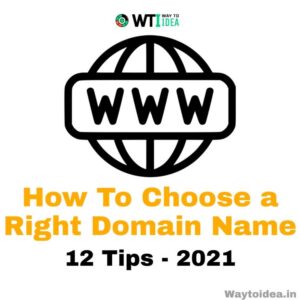How To Write SEO-Friendly Content – Complete Checklist (2023)

How skilled are you at writing a readable, SEO-friendly blog? Consider that the true meaning of SEO is to publish content that both search engines and users can understand.
If your articles don’t meet these two conditions, they have little chance of ranking high in search results and are more likely to be ignored.
On the other hand, if they meet both criteria, users will spend more time reading your posts and interacting with them.
You should keep in mind that an SEO-optimized post does not necessarily have great content. Don’t expect it to rank high just because you followed all the steps to make it SEO friendly.
It is the combination of good content and good SEO that will boost your rankings. And good SEO contains On-page SEO and Off-page SEO.
Leaving this clear, here I give you some proven tips and secrets to writing SEO-friendly blog posts or articles so that your content has the preferred vote of your audience and improves your ranking in SERPs.
How to Write SEO-Friendly Blog Posts – Checklist
1. Do Keyword Research
The very first step of writing an SEO-friendly blog post is keyword research.

Choosing the ideal keywords for your blog is a strategy that will allow you to position yourself for targeting keywords that your audience is searching for on the internet and that you can attack.
For this reason, it is essential to investigate with the help of SEO tools before choosing the blog post topics or keywords that you will address.
Among the free ones, KeywordTool, Google Trends, Ubbersuggest, and more. While Semrush and Ahrefs are some of the paid software that will give you more detailed and complete keyword reports. I suggest you go with SEMrush.
2. Define Blog Post Goal
Writing useful content for your audience is a part of a great Inbound Marketing strategy. But before you start writing, ask yourself:
- What do you want to tell your readers or what central question do you want them to answer?
- What is the purpose of the article?
- What do you want users to do at the end?
Write the answers to these questions before you start writing because this goal will set the tone for writing useful and effective content.
Whether you trying to capture emails, or generate sales through email marketing or anything else, defining a goal of a blog post before writing is a must.
3. Outline the Structure of Your Post
Each item must have:
- an introduction in which you preview a bit of what readers will find and how that information will benefit them. You can start with relevant questions, important data, or stories.
- a body in which the main content is written, sectioned under subheadings that help users navigate through the text easily.
- a conclusion that summarizes the most important ideas, elicits any new ideas and includes the main call to action.
Synthesize what you want to write in these three sections to focus on the most relevant ideas and order them to keep users interested from start to finish and motivate them to take that action that will help your sales goals.
4. Write an Attractive Title
You have created a great post that is worth reading and sharing because it offers highly valuable content for your audience. But the title matters a lot too.
However… you know that by publishing it you will enter into a pitched battle: you will have to compete with many similar ones that are also available to your readers.
Especially on the internet, this fight is ruthless: all of them are doing their best to win the desired click.
The text you use is decisive for increasing the CTR (click-through rate), so you must strategically select the words you will use so that it is a hook that catches people’s attention.
The characteristics of a good title are the following:
- It is 55-60 characters long to display seamlessly in SERPs
- Include the target keyword
- It is oriented to the user’s search intention
- Accurately describes the content of the blog post
- Use Power words and number
- It is interesting and encourages users to click.
These are some aspects of a catchy blog post title you should know.
5. Write SEO Friendly Meta Description
The use of a good meta description will help us improve the CTR (Click Through Rate). It is the number of clicks that a link obtains concerning its number of impressions of the searched keyword, that is the possibility that people click on your content.
What is the benefit of this? It will boost the visibility of the indexed entry. In addition, it must contain the Keyword, preferably at the beginning. And its ideal length is 150 characters.
6. Optimize the URL
Usually, the CMS automatically generates the URL based on the title. So you will have to edit it manually to improve it.
Preferably it should be short, friendly and without “stop” words (these are terms that have little value in the meaning of a keyword or sentence, for the algorithm it is more effective to omit them when optimizing SEO positioning and display the best possible results, referring to articles, prepositions, adverbs, pronouns, and even some verbs).
Now a question can pop up in your mind. Using a category in the post URL is effective or we should use it?
The quick answer is YES. You should use a category in your post URL that must appear in SERPs (Search engine result pages):

Checklist for an SEO-friendly blog post URL:
- Eliminate unnecessary words like conjunctions and prepositions
- Include the target keyword
- Try not to use numbers in URLs to keep your content evergreen
- Keep it short
Here is an example of SEO-friendly URLs and a non-SEO-optimized URL:
- SEO Optimized: waytoidea.com/how-to-start-a-blog
- Non-SEO optimized: waytoidea.com/how-to-start-a-blog-in-2021
7. Use Headings with Target Keywords
Headings structure the entire page, so you should use them in your articles.
They are important for readability, but for SEO as well. These help Google to capture the main topics of a long post, and therefore, to facilitate its indexing.
In addition, they will guide users and help them scan the content. Be sure to use keywords and add H1 to the main title, H2 to sections, H3 to subsections, and so on if you use more levels.
Using target keywords in the URL, title and description are not enough. Using target keyword(s) in subheadings also helps increase rankings.
8. Segment Content Into Short Paragraphs
Blocks of text overwhelm people, while short paragraphs allow them to observe the information more easily. They are like trampolines that keep readers jumping from one to another.
In addition, the blank lines give air and greater readability to the post. This will make it easier to understand the content, which will influence the time spent on the blog or website which leads to a good bounce rate.
Write as simply as possible. avoid addressing more than one topic in each sentence and using complicated words. Long sentences and terms can lead to mental fatigue and disinterest.
9. Use Linking or Transition Words
Transition or linking words help people read the content and understand the main idea. As its name indicates, they connect or string sentences and paragraphs to articulate them coherently.

Integrating them into your articles will make them more fluid and enjoyable for your audience, so they are also decisive for them to stay reading until the end.
If, for example, there are three reasons why people buy your product, you could use linking words such as: “first”, “second” and “finally”.
Words like “however” and “in fact”, and conclusive connectors like “thus” or “for this reason” are also very useful.
10. Keyword Density
Keyword density is the percentage that indicates the ratio between the number of times a keyword appears with respect to the total number of words in the text.
For example, imagine that we are writing a post that talks about how digital transformation is affecting the growth of companies, its importance in a globalized world, and the keys to a digitalization plan. Our keyword is “digital transformation”.
The article length is 1,500 words long and the keyword appears 12 times. We can easily calculate and see that the keyword density is 0.8%. If it appeared 20 times it would be 1.3%. If I did it 40 times, 2.6%.
How do you calculate keyword density? The formula is straightforward: Divide the number of times a keyword is used on your page by the total number of words on the page. Multiply this by 100 to get a percentage, which in this case is 1%.
For this, you can help yourself with the free SEOquake plugin where the ideal keyword density is 1%.

11. Add Images and Optimize them
Adding images to your content is a nice way to break the monotony of text. In addition, they work to illustrate and supplement the information to make it easier to understand.
For your visual elements to contribute to the positioning, insert the alt tag that includes the main keyword or some related ones, which must also be in the file name.
Similarly, compress them with image compression tools like iloveimg.com or tinypng.com so that the weight does not slow down the loading of the blog or website.
12. Optimize Article Length
Make sure your articles are a minimum of 800 words.
Of course, the length depends on the objective you have, the keywords to position, the content with which you compete, and the need you are trying to satisfy.
Remember to always think about the visitors: if they are lazy to read, the type of conversations they want to start when they enter your article, and the main reason that led them to find the post.
As a general rule of thumb, embed search terms in about 1-4% of the text. These can be exact words or related phrases as a question, just as users would query it in the voice search engine.
By the way, the article length totally depends on the blog post topic and user search intent. For example, if you are writing an article on “how to delete an Instagram account”, then you cant able to extend its word length to 1000. Also, no one will be interested to read more info as they are only looking for a way to delete their Instagram account.
13. Link to Previous Blog Posts
If you have already written some other content on the topic in question, do not forget to link your post to that article. That will make it stronger because that way you show some authority on the subject.
Use, as far as possible, relevant anchor text (words that make up the anchor text of the link), which contain keywords or related terms. Your link structure is very important for ranking on Google; plus your reader might be interested in the linked articles as well.
Conclusion
Optimizing and writing an SEO-friendly article for your website can be done by focusing first on what we want to present to the reader and that this is with content that generates value. Hand in hand with a good prior analysis of our keywords, creating from it an organic structure.
So that once the content is optimized, it can be replicated throughout the web with the help of our most loyal users and those who will come thanks to optimizing your SEO positioning.
I hope this checklist for writing SEO-friendly blog posts helps you. If you have any questions or suggestions, feel free to comment below.








